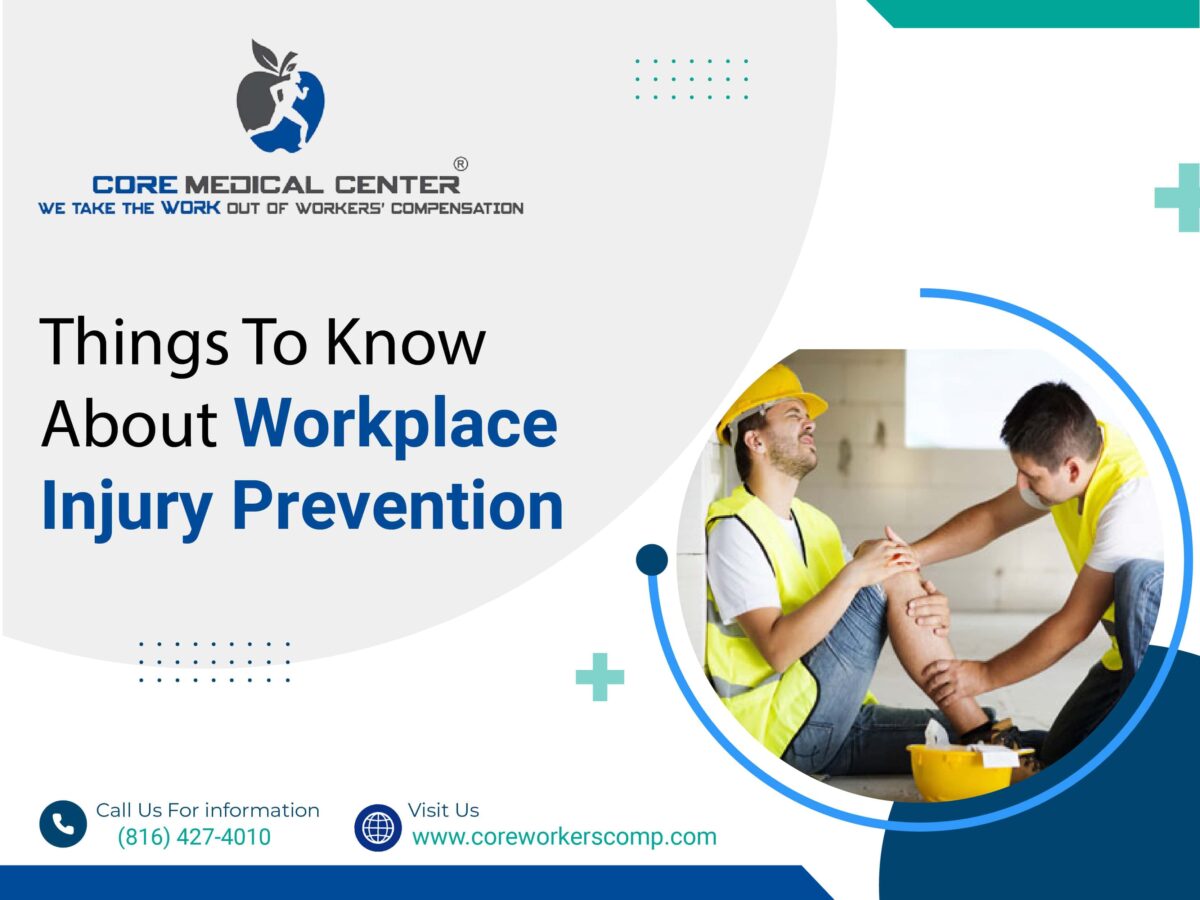Ensuring the health and safety of workers is crucial in the ever-changing modern workplace. Workplace injuries can deeply impact an organization’s productivity and the well-being of the individual. In this blog article, we’ll go over important information about preventing workplace injuries and giving employers and workers the tools they need to establish a secure and productive workplace. If you need any assistance with Workplace Injury Prevention, contact Core Medical Center.
We have an experienced team who can also help you to make Workers’ Compensation Appeals by doing the official work. Even our team will help you by providing primary care if you have any work-related injuries.
Let’s get into the discussion:-
- Comprehending the Expense of Occupational Injury
- Comprehensive Training Programs
- Ergonomics and Workplace Design
- Implementing Robust Safety Policies
- Encouraging a Culture of Safety
- Regular Safety Inspections
- Providing Adequate Personal Protective Equipment (PPE)
- Encouraging Work-Life Balance
- Keeping Up with Regulatory Standards
- Incident Investigation and Continuous Improvement
Comprehending the Expense of Occupational Injury:
There are substantial financial and human costs associated with workplace injuries. Indirect costs include lost productivity, hiring new employees, and possibly damaging the company’s reputation. Direct costs include medical bills and compensation. Understanding these ramifications highlights how crucial it is to prevent injuries proactively.
Comprehensive Training Programs:
One effective strategy for reducing workplace injuries is knowledge. Comprehensive employee training programs that cover safety procedures, appropriate equipment use, and potential workplace risks should be given top priority by employers. They must update the training programs often to ensure staff members know about changing safety regulations.
Ergonomics and Workplace Design:
Preventing injuries is greatly aided by ergonomics. Prioritizing ergonomic principles in workstation design lowers the incidence of repetitive strain injuries and musculoskeletal illnesses. You can achieve a healthier and more productive workplace by implementing workspace customization, adjustable furniture, and appropriate lighting.
Implementing Robust Safety Policies:
A key component of preventing injuries is the establishment of explicit and binding safety regulations. These regulations should cover various topics, such as reporting guidelines for possible dangers, equipment usage guidelines, and emergency procedures. To guarantee the organization has constant safety culture, regularly disseminate and enforce these regulations.
Encouraging a Culture of Safety:
An atmosphere where employees actively participate in injury prevention is fostered by a workplace culture that prioritizes safety. Promote open dialogue about safety issues, provide staff members the freedom to disclose dangers without fear of retaliation, and recognize and celebrate safe behavior. Creating a positive safety culture is a team effort that begins at the top and spreads across the company.
Regular Safety Inspections:
One proactive way to find and fix such risks before they cause harm is to carry out routine safety checks. It includes assessing workstations, machinery, equipment, and compliance with safety procedures. Resolving problems as soon as they arise contributes to a secure workplace.
Providing Adequate Personal Protective Equipment (PPE):
Gloves, helmets, and safety goggles are examples of personal protective equipment that employees may need depending on their employment. Employers must supply the necessary PPE and ensure staff members are instructed in its upkeep and proper use. Confirming the effectiveness of PPE also requires regular inspections.
Encouraging Work-Life Balance:
Workplace injuries can be caused by stress and fatigue. Encourage a good work-life balance by endorsing projects that put employee well-being first, offering break areas, and advocating for appropriate working hours. A relaxed and well-rested worker is less likely to have mishaps.
Keeping Up with Regulatory Standards:
Regulations about workplace safety are subject to revisions and adjustments. Employers must be aware of local and industry-specific safety regulations to guarantee compliance. Maintaining a safe workplace is facilitated by routinely evaluating and revising safety procedures by the most recent recommendations.
Incident Investigation and Continuous Improvement:
Organizations can take corrective action and avoid reoccurring incidents by knowing the underlying causes. Adopting a continual improvement approach guarantees that safety protocols adapt to the ever-changing demands of the work environment.
Conclusion
Preventing workplace injuries is a shared duty that calls for dedication, open communication, and ongoing development. If you need any assistance with Workplace Injury Prevention, contact Core Medical Center. We have an experienced team who can also help you to make Workers’ Compensation Appeals by doing the official work.

